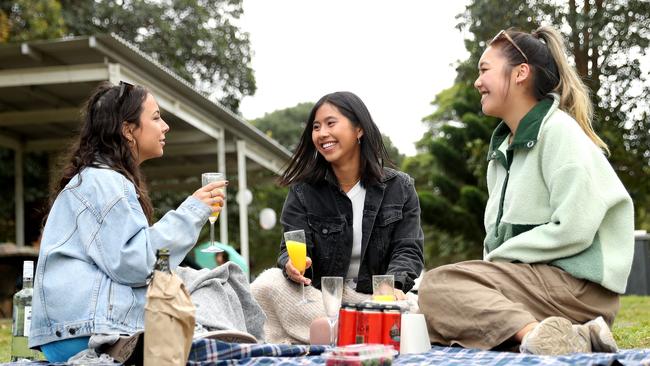Unpredictable lockdowns could be replaced with timed national shutdowns
Lockdowns are inevitable, even as vaccinations rise, so we should consider scheduling two-week shutdowns to keep cases low.
Opinion
Don't miss out on the headlines from Opinion. Followed categories will be added to My News.
Australia is finally waking up from the dream that the SARS-COV2 virus will disappear as a result of our interventions.
Based on our current knowledge, it is a very reasonable assumption that this virus and its
consequences in the form of Covid-19 disease are going to stay with us for a long time. At least that seems to be our current knowledge of the potential impact of testing, tracing, vaccinations, masks and social distancing, as well as the nature of this virus and the various mutants we have seen so far.
The difficult question for Australia is what an acceptable “new normal” would be and how to get to it.
Let us be humble. Nobody has the crystal ball. I am always guided by that great philosopher Yogi Berra, who said “It’s tough to make predictions, especially about the future”.
But there are some things that we know: for example, the overall capacity of the Australian hospital system.

My other guiding principle in situations like this is the statement by the famous statistician George Box: “All models are wrong but some are useful”. The Doherty Institute model of the Covid-19 pandemic for Australia is useful.
The Treasury report based on that model provides an excellent analysis of potential future scenarios for Australia’s management of Covid-19 infections and, in particular, it extends the Doherty work to the economic impacts.
Most importantly, it hits the nail right on the head by not even considering scenarios that would imply exceeding the capacity of the current Australian healthcare system. Ignoring that constraint would potentially lead to death rates that could exceed even those, for example, in the US or UK: the latter has about 70 per cent vaccination of the population with second jabs, yet the daily new cases average almost 40,000 and, sadly, about 100 people a day die from Covid-19. Such numbers in Australia are unimaginable and I am sure most Australians would be prepared to take the tough steps to prevent them.
We can – and should – expand the capacity of the healthcare system but building new hospitals and ICU units, and finding well-trained staff for them, takes time. But that is not enough.
The Treasury report projects that with the current capacity of our hospital systems, some form of lockdowns would be necessary in future; as no vaccine is 100 per cent effective. Even if the vaccination rates reach 80 per cent plus, we will need lockdowns in the foreseeable future.

The modelling of the impact of the lockdowns in the Treasury report does not address one important and preventable factor – the consequence of the fact that the timing of these lockdowns is at present unexpected, unplanned and sudden.
That adds to the financial losses to industries such as hospitality, tourism and sports, or for anyone working with perishable goods. But it is also psychologically devastating for students and their parents, as well as anyone who cannot work remotely. We are ill-equipped for such dramatic twists in our personal and social life, as well.
Looking at the global pattern of the Covid-19 infection, the peaks and troughs in case numbers follow a similar pattern of two to four-month cycles. The amplitude changes – and in countries with successful public measure controls it goes down – but the periodicity remains.
Would it not be worth trying to plan regular nationwide lockdowns? For example, two weeks of strict lockdowns every two months? These would enable each one of us as individuals, communities and a nation to plan our activities in advance.
It would probably also give rise to new enterprises that could provide the much-needed extra goods and services when lockdowns are under way, for example, extra educational materials for children. The catering industry could refocus on home delivery of meals, particularly for those in greatest need. And one could think of many others that already exist but as the need for them comes and goes irregularly, they are under-utilised, such as physical exercise classes for home, music or language lessons, or gaining extra qualifications to expand our employability.
Virtual reality technology could become a real reality of our planned lockdowns,
What if a particular locality were to get a massive outbreak of Covid-19 outside such regular lockdowns? The state governments could always start a reactive lockdown if things got out of hand but the chances are good that ultimately these regular nationwide lockdowns would reduce the case numbers during the peaks that the country could cope with.
Of course, the lockdowns could be relaxed, or made less frequent as we find new ways to deal with this infection and expand our healthcare capacity.
Dr Igor Gonda is a respiratory health research scientist who worked in universities and industry in Australia, the UK and the US. He is currently consulting with several companies on potential therapies for Covid-19.




